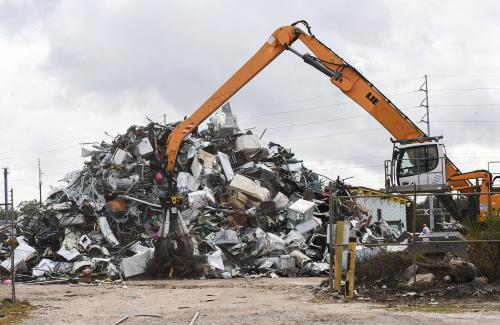By no account has the Kyoto Protocol been a smashing success, but it has produced some positive outcomes. The European Union, for example, established its greenhouse gas emissions trading system (ETS) in part as a way for it to reach its promised Kyoto Target. This cap-and-trade system has been operational since 2005 and covers approximately 50 percent of the EU’s carbon dioxide emissions.
The European Commission estimates that by 2020, the EU’s total emissions will be 21 percent lower than they were in 2005. While the ETS did encounter some problems in its implementation—notably a costly mistake in over-allocating allowances—the ETS continues to provide incentives for greenhouse gas reductions and owes part of its existence to the Kyoto Protocol.
A second and more direct Kyoto success was delivered by the Clean Development Mechanism (CDM). The CDM is a project-based system that enables firms in developing countries to receive additional financing for projects that reduce greenhouse gas emissions. While the CDM was also plagued with a number of problems in its first few years, it has nevertheless spurred a great number (over 2000) projects that collectively will lead to nearly 1 billion tones of CO2 equivalent of emissions reductions by 2012. In addition to the emissions reduction benefits, the CDM has led to an explosion of technical and financial expertise in many of the largest emerging economies—India, Brazil, China and Mexico, to name a few. Through the market incentives of CDM, these countries now have the capacity to understand and implement low-emissions energy technologies in their own particular national situations, a characteristic that should provide dividends as they pursue their own domestic energy policies.
Despite these successes, the CDM’s future is cloudy. As part of the Kyoto Protocol, uncertainty about Kyoto necessarily raises some doubts about the viability of the CDM as an instrument. Some concerns to this end have been raised at the ongoing negotiations in Cancun. However, the machinery of the CDM could easily remain in place after the Kyoto Protocol’s targets expire, should the Parties agree. This would enable new projects to be implemented. Of course, new projects are worthless unless there is a demand for the emissions reductions that they generate. There too, there is some good news: demand for these credits (called CERs) has derived not from the Kyoto targets themselves, which were always weak and unenforceable, but rather from the EU ETS, which allows certain CERs to be used for compliance. The EU has stated clearly that it will continue to accept some CERs beyond the 2012 timeline. As such, the CDM should remain a viable mechanism.
However, not all is perfect with the CDM. The CDM suffers from a number of problems. One of the primary issues is the large bureaucratic burden in getting a project approved. Most projects must be proposed individually, and each project then must be evaluated by an auditor and a group of experts before approval. While the CDM procedures are being simplified, one of the major new proposals being discussed in Cancun is the possibility of setting “standardized baselines”—in other words, basic templates which would apply to all (or most) projects in a specific category. These would increase transparency and also simplify the approval process. Nevertheless, negotiators have yet to agree on how to implement such standardized baselines, and discussions so far have been unproductive.
A second thorny issue that has arisen in the negotiations thus far is a proposal by Saudi Arabia, Qatar, and several other oil- and gas-producing countries to allow carbon capture and storage (CCS) projects to be eligible for the CDM. From a political perspective, such a proposal would go far toward encouraging this bloc, which has hitherto been reluctant (to say the least), to embrace international climate policy. But many groups fear that allowing CCS would potentially divert CDM resources away from projects that are deemed more appropriate to the goals of the CDM. Unfortunately, the question of what constitutes a “good” project in CDM has been long the subject of debate: if the CDM were simply a market mechanism, nobody would care where the credits come from—whether it be industrial gas decomposition, CCS, or small scale solar PV in rural sub-Saharan Africa. But the CDM is not simply a market: the CDM exists both to provide a market incentive for low-carbon projects, but the language of the Kyoto Protocol also stipulates that the CDM should equally encourage “sustainable development.” And, as many people have previously pointed out, sustainable development can mean quite different things to different people—or countries. Negotiators will have to traverse both of these difficult issues over the next week if they wish to make progress on a post-2012 CDM architecture.



Commentary
A New Clean Development Mechanism
December 6, 2010